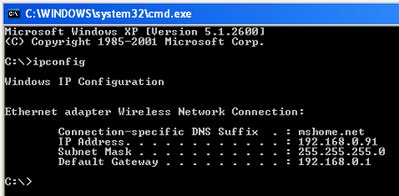

This is a more powerful command prompt so it’s commensurately more dangerous if you accidentally use DEL or similar. Learn more with FIND /?įinally, if you want to show off some admin skills too, go back to the original search results from your search for “command” and choose “ Run as administrator”. Obviously, use this with care!įIND is a useful command too as it can search the contents of files in a folder or even subfolders. In fact, you can learn more about the DIR command by using DIR /?Īnother useful command to know: DEL lets you delete a file, as in DEL TESTFILE.TXT but be aware that there’s no recycle bin so deletes are instantly permanent. The command flags let you really fine tune the results you get: /N produces a long listing format, /Q includes the owner of each file and folder and /P pauses the listing on a page-by-page basis (notice the last line prompts “ Press any key to continue…“). One more DIR command: This time we’re going to add multiple command flags or options: /N /Q and /P for a combined command of DIR /N /Q /P. See? You’re already becoming a Command Prompt power user! 🙂 Instead of using DIR /W try DIR /D instead: Look closely at it, though, and you’ll realize that the sorting order for this multi-column view is pretty confusing because we naturally read columns top to bottom, left to right, but it’s sorted top left to bottom right. You’ll have to look closely, but the first command typed in is CD \WINDOWS to get to the same location as the File Explorer view, then DIR /W to produce a listing of files and folders in a handy multi-column view. Now I can demonstrate two very useful commands: CD to change directory and DIR to list files and folders within a directory: In a little bit I’ll show you a very useful command that requires you to be administrator, so in that instance you’ll want to fire up a new Command Prompt using the “Run as administrator” link.įor now, just click or tap on “ Open“. For basic interaction and command line usage you definitely want to run as a regular non-administrative user by choosing “ Open“. Specifically, there’s “ Open” and “ Run as administrator”. Notice that there are more options than usual below the Command Prompt app. To find out, search for “ command” in Windows 10 search: So what’s it look like from the Command Prompt?
Dos commands windows 10 and how to use full#
Notice that File Explorer has neatly shown this directory as This PC > Local Disk (C:) > Windows but as you can see, it’s a lot of folders full of content. With that understood, let’s start with a File Explorer view of the C:\WINDOWS directory: Keep in mind that any time you’re working at the command prompt you’re also generally working without a safety net, so don’t remove files or rename anything unless you’re entirely sure you know what you’re doing. Still, it is pretty interesting to have a sort of digital journey down memory lane with the command line interface in Windows, so let’s have a look.

The down side is that it’s extremely limited in its functionality and barely offers more than a few administrative commands and a very rudimentary ability to move around the file system and list files. Old school Windows, as if we were back in the glorious 1980’s and the command line was the only game in town! You really want to go with a Linux command shell in Windows but the basic MS-DOS style window can work too in a pinch, and the good news is that it’s ready to go on every Windows computer ever made.


 0 kommentar(er)
0 kommentar(er)
